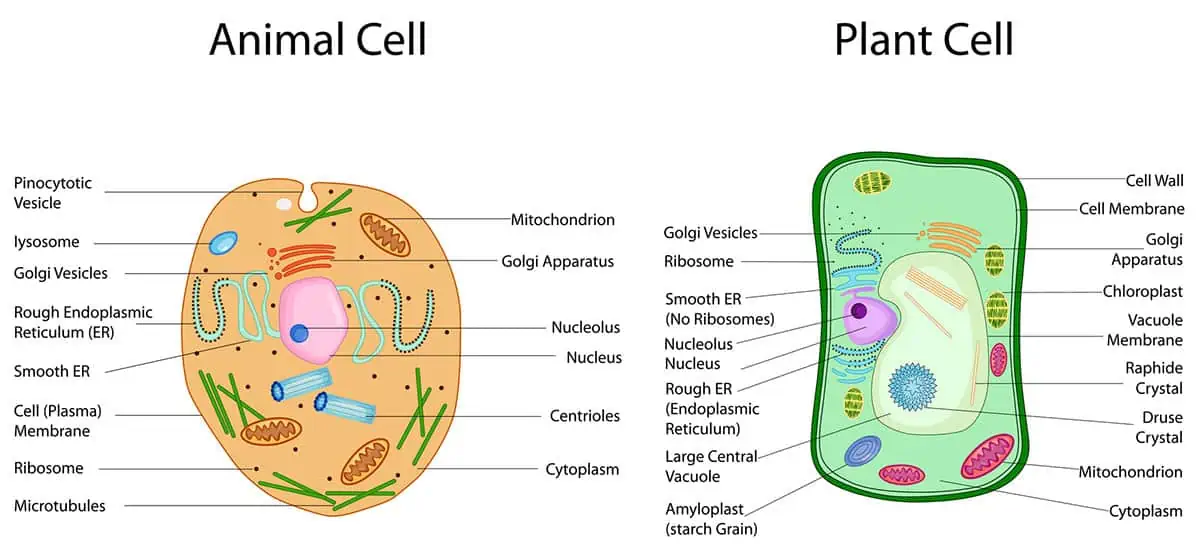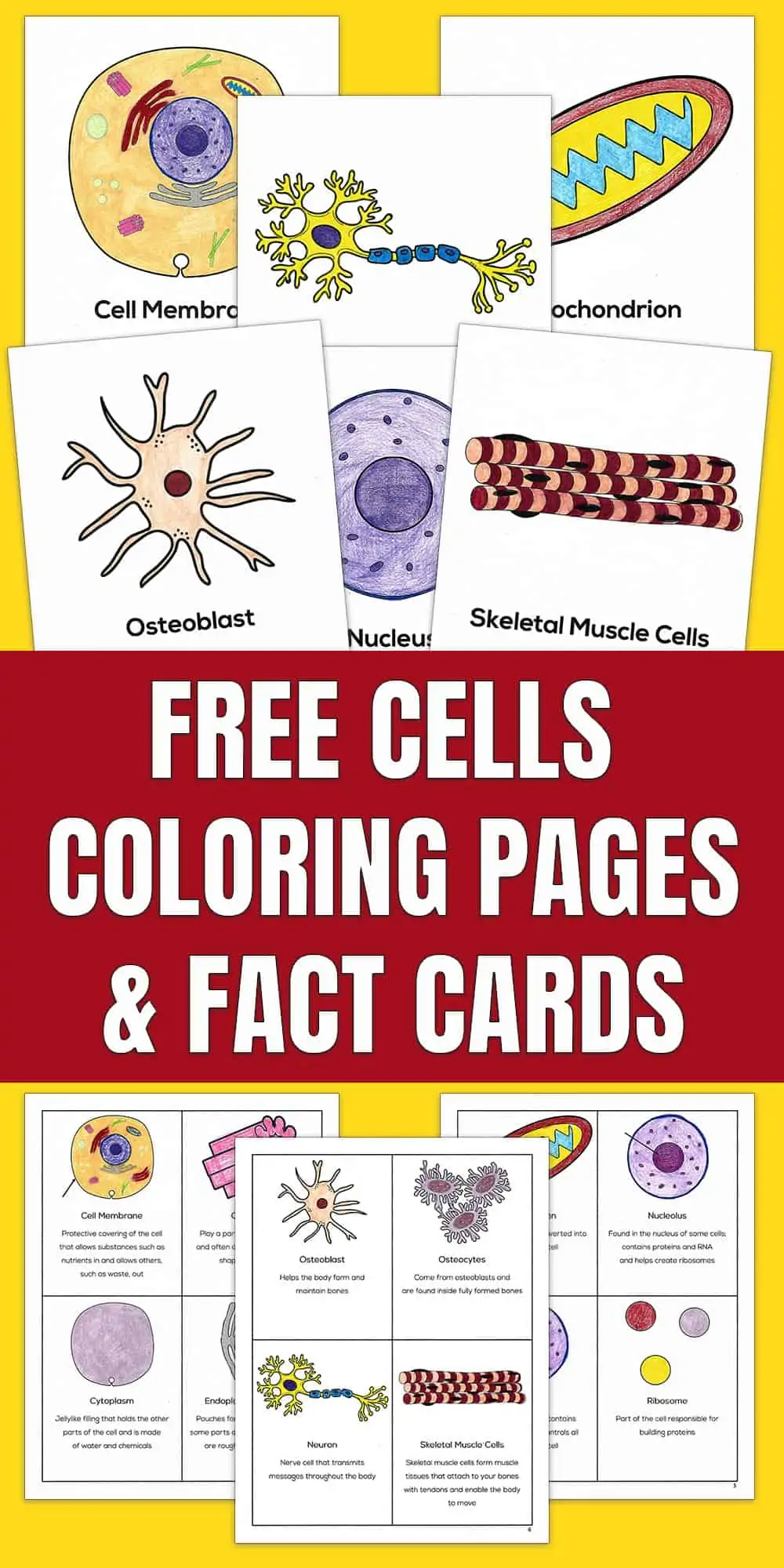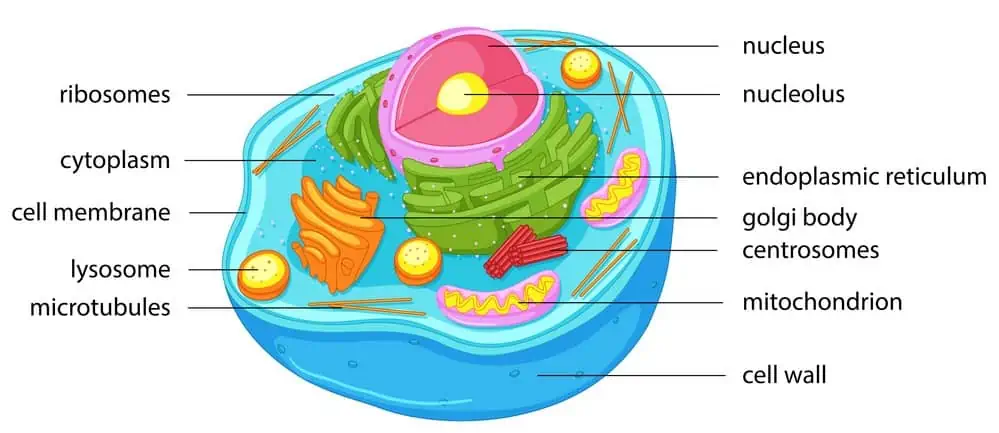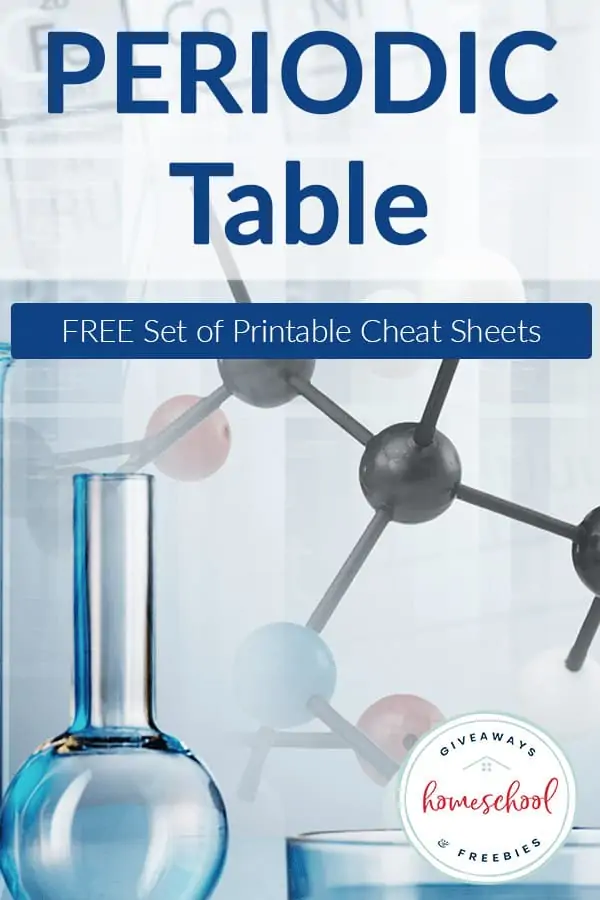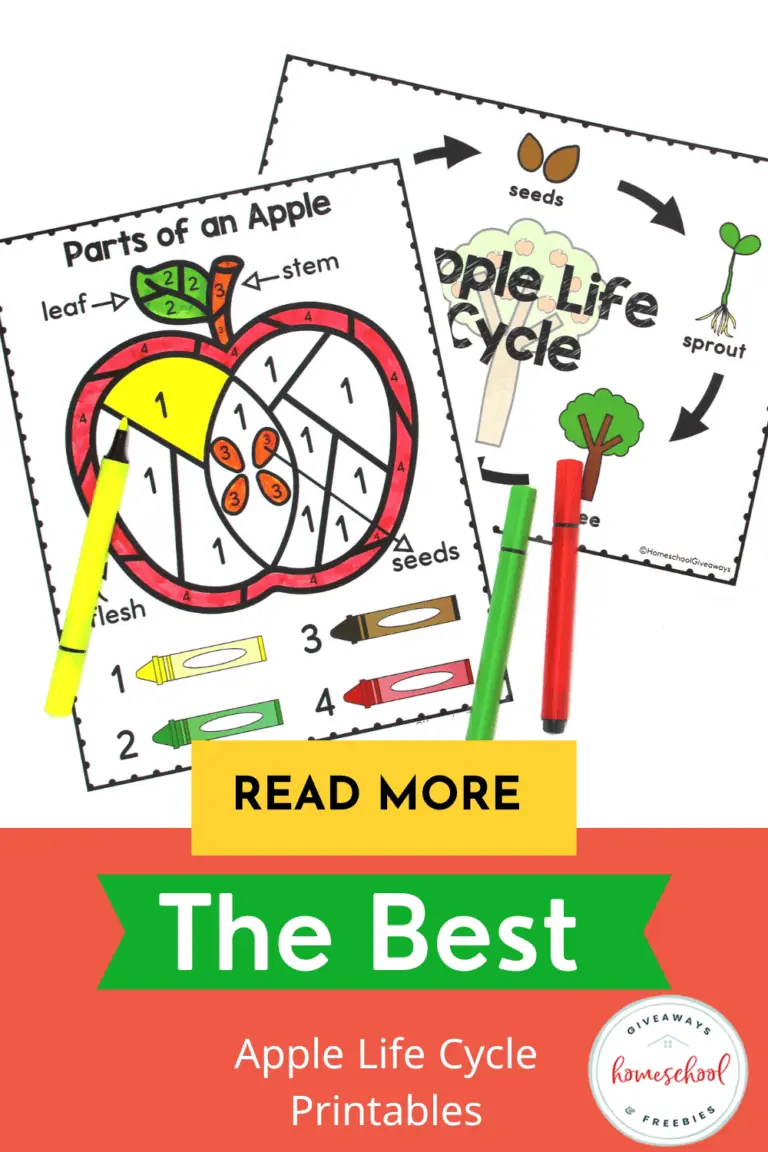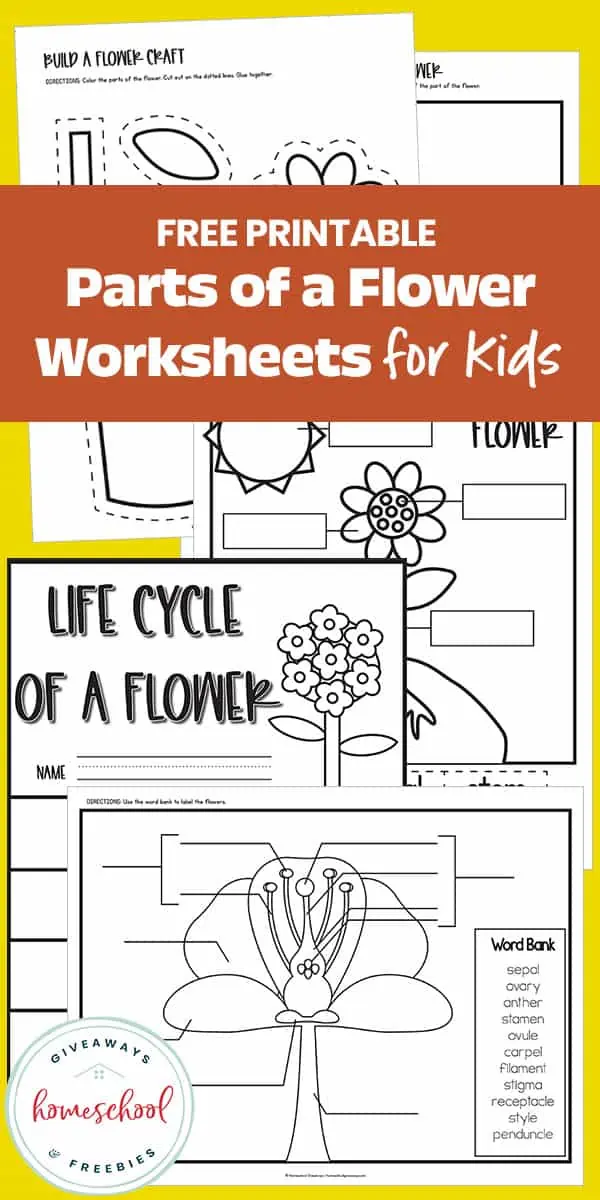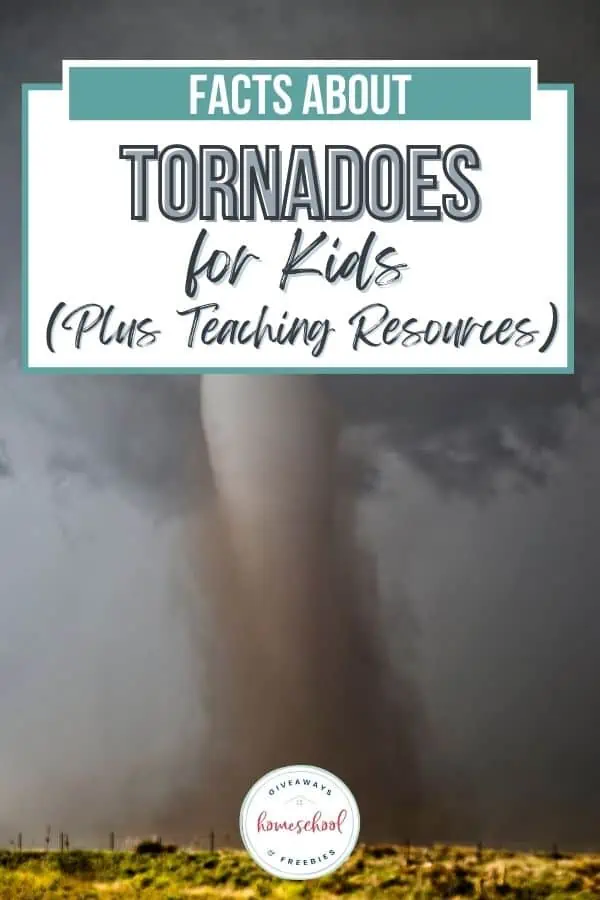Teaching Students Facts About Plant and Animal Cells
Published:
June 20, 2022
Contributor:
Jeannette Tuionetoa
Disclosure: This post may contain affiliate links, meaning if you decide to make a purchase via my links, I may earn a commission at no additional cost to you. See my disclosure for more info.
Explore facts about plant and animal cells. Learn what makes up each cell and the differences and similarities between both. Be sure to download our free cell coloring worksheets and fact cards. Get info at the bottom of this post.
Facts about Plant and Animal Cells
A cell is the basic unit of life or basic building block of all living organisms. If only one cell was found on another planet, it would be considered finding life on that planet – not a clump, just one cell.
The word “cell” derives from a Latin meaning which means “small room.” When your students learn more about the cell, they will see why a small room is appropriate. Some things take place in the small room and something outside of the small room.
More Facts about Plant and Animal Cells:
Cells are enclosed by a cell plasma membrane which separates them from all biological activities from the world around them.
Organelles are the tiny structural parts located inside of the cell. They have various functions which keep the cell alive and active.
What do plant and animal cells have in common?
Plant and animal cells have some common or similar things and functions. Plants and animal cells are both eukaryotic cells. This means that they have membrane-bound organelles (cell membrane and cell organelles) like a nucleus and mitochondria.
They also both have cytoplasm, ribosomes, endoplasmic reticulum (smooth and rough), peroxisomes, Golgi apparatus, and Microtubules/ Microfilaments.
Differences Between Plant and Animal Cells
Next, let’s explore the differences between plant and animal cells.
What are the 5 differences between plant and animal cells?
The first obvious way that plant cells and animal cells differ is in their appearance. Here are 5 major differences between plant and animal cells:
- Appearance – Plant cells tend to have a more rectangular shape to them, while animal cells are more circular in shape.
- Cell Wall – Plants have a rigid cell wall surrounding the cell membrane. Animal cells don’t even have a cell wall.
- Energy – Plants are autotrophs, producing energy from sunlight (light energy) through photosynthesis. The process is used for cell organelles that are called chloroplasts. Animal cells produce energy from food (glucose) through a process we call cellular respiration. This process occurs within mitochondria.
- Growth – Plants increase their cell count (increase cell size) by becoming larger in size – meaning they grow by absorbing water into the central vacuole. Animal cells increase their size by increasing the number of cells they have.
- Proteins – There are 20 amino acids needed to produce protein. Plant cells synthesize all 20 amino acids. Animal cells, on the other hand, only can produce 10 of those amino acids naturally. Only through diet can the other ten be produced in animal cells.
You might be interested in these free printables:
- Botany worksheets – These botany worksheets.
- Follow along with Apologia Botany using free printables.
- Learn about biomimicry with some biomimicry examples for kids.
- Learn about trees and leaves using free printables.
Free Cells Coloring Pages and Fact Cards
Scroll to the bottom to learn more about our free coloring worksheets for cells and printable fact cards.
What do animal cells have that plants don’t?
There are several organelles and things that animal cells have that plant cells don’t have. For instance, only animal cells have centrioles.
Centrioles are cylindrical structures that organize microtubules for the cell division process. Animal cells also have Lysosomes, Cilia, cytokinesis, and more.
What do plant cells do?
Plant cells are the building blocks for all plants. The main function of plant cells is the photosynthetic process. Photosynthesis takes place in the chloroplast of plant cells and is the process of preparing food/energy for plants. Plant cells do this by using sunlight, carbon dioxide, and water.
Parts of an Animal Cell
The entire animal kingdom begins with one basic animal cell. Animal cells lack the rigidity that plant cells have, so they tend to be more round in shape and have irregular shapes.
- Ribosomes – The ribosome is the smallest membrane-bound organelle part of the animal cell that produces protein.
- Chloroplasts – The green chloroplast is a disc-shaped organelle that comprises of a green-colored pigment called chlorophyll and is a part of the plant cell where photosynthesis takes place.
- Cell membrane (both animal and plant cells) – The cell member is housed within the cell wall and is the door that controls everything going in and out of the cell. For example, the cell membrane keeps toxins from entering the cell but keeps nutrients and essential minerals in it.
- Cytoplasm (both animal and plant cells) – The cytoplasm of a cell is the living substance contained within a cell (not including the nucleus) that contains the enzymes.
- Nucleus (both animal and plant cells) – The nucleus and nuclei (plural) control all of what occurs inside the cell (all the cell activities) and contain chromosomes.
- Mitochondria (both animal and plant cells) – These double-membrane organelles are located within the cytoplasm of the eukaryotic cells. They produce energy by breaking down sugar molecules and carbohydrates.
Anatomy of an Animal Cell
Parts of a Plant Cell
Plants are a beautiful sight to see. With lush greenery and flowers that bloom giving us a visual delight. Yet, within those flowers are intricate processes that would blow your mind.
The following parts make up a plant cell:
- Large central vacuole – The function of the central vacuole is to store water, sustain turgor pressure against the cell wall, and holds the waste of plant cell. The central vacuole consists of cell sap and is made up of salts, enzymes, and other substances.
- Cell wall – The plant cell wall is a tough, rigid outer wall made up of cellulose. It provides structural support to the cell.
- Chloroplasts – The chloroplast is a disc-shaped organelle that comprises a green-colored pigment called chlorophyll and is a part of the plant cell where photosynthesis takes place.
- Cell membrane (both animal and plant cells) – The cell member is housed within the cell wall and is the door that controls everything going in and out of the cell. For example, the cell membrane keeps toxins from entering the cell but keeps nutrients and essential minerals in it.
- Cytoplasm (both animal and plant cells) – The cytoplasm of a cell is the living substance contained within a cell (not including the nucleus) that contains the enzymes.
- Nucleus (both animal and plant cells) – The nucleus and nuclei (plural) control all of what occurs inside the cell (all the cell activities) and contain chromosomes. The nucleus also carries genetic information (DNA) within it.
- Mitochondria (both animal and plant cells) – These double-membrane organelles are located within the cytoplasm of the eukaryotic cells. They produce energy by breaking down sugar molecules and carbohydrates.
Anatomy of a Plant Cell
Facts About Animal Cells
Kids enjoy learning interesting facts as they are simple ways to remember topics and remember what they are learning. Here are some animal cell facts kids can enjoy and learn during their lessons.
- Animal cells are known as eukaryotic cells, meaning that they have a nucleus. (NOTE: Prokaryotic cells are organisms with cells that do not have a nucleus and other organelles.)
- During regular animal cell activity, some RNA and DNA strands can malfunction, but the living cell has the ability to automatically fix itself. This is one of the coolest things my kids remembered about animal cells.
- If a cell is damaged, it immediately self-destructs so as to not damage any other cells.
- The animal cell is made up of starch, protein, lipid, and 70% water.
- Plant cells are the smallest biological unit of life found in plants. They can be between .01 and 1.0 millimeters in size and can’t be seen by the naked eye.
Facts About Plant Cells
- Plants are also classified as eukaryotic cells (membrane-bound nucleus) because they have a nucleus and organelles surrounded by a membrane.
- Plant cells are the only living cells (so far) on the whole planet that can actually make and produce their own food.
- Cells are known as being round and irregular in shape, but plant cells are rectangular and have a definite shape.
- Plant cells have three organelles that an animal cell does not have – a vacuole, cell wall, and chloroplast.
- Since plants live on land AND in the water, plant cells have to help the plants survive in either environment and adjust to the varying conditions in which it lives.
In Conclusion
Cells are absolutely fascinating to learn about. These tiny things do enormously huge and important jobs in our bodies and in plant life.
Children will find it interesting how such a small thing can be so crucially important in the different functions of life – God’s intricate creation from the tiniest cell to the most elaborate of rainbows.
Whether you are studying plant and animal cells or a grander science like biology, there are some important questions to discuss with your children.
You can ask if all these minute functions, microscopic organisms working together, and detailed amazing features of living organisms could have come about by chance. There is no possible way they didn’t have a creator.
Cell Coloring Worksheets
We created some cell coloring worksheets that you can print and use in your homeschool. You’ll also find free fact cards to use that can aid in remembering the parts of a cell and their functions.


